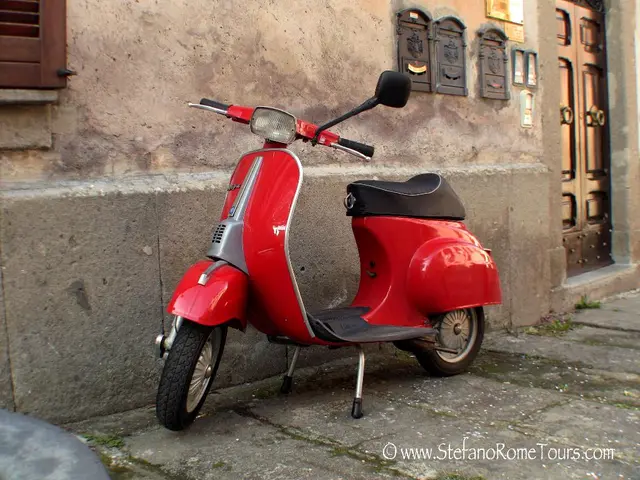Uncovered Discoveries at Dürnrohr Waste Site
In the picturesque landscapes of Austria, an unexpected hub of resource recovery and recycling lies in the small town of Dürnrohr. Managed by EVN, as confirmed by spokesperson Stefan Zach, the Dürnrohr waste processing plant is a testament to the power of urban mining.
This waste processing plant processes an impressive 500,000 tons of household, bulky, commercial, and industrial waste annually. The plant's operations are so extensive that employees often stumble upon unusual finds, such as old bicycles and lawnmowers, amidst the waste.
The plant's primary focus is on recovering resources, a process that involves sorting and processing waste materials. During incineration, hazardous substances are destroyed or filtered out, ensuring a safe and environmentally friendly environment.
The plant's operations support the circular economy by recycling large amounts of metal. In fact, approximately 25 kilograms of metal scrap, such as wheel rims and metal frames, are filtered out per ton of waste. The gypsum produced, amounting to four kilograms per ton of waste in the wet flue gas cleaning process, is also utilised in the construction industry.
The environmentally friendly logistics of the Dürnrohr waste processing plant are commendable. Most of the waste is transported by rail in special containers, reducing carbon emissions and promoting sustainability.
The sustainable solution implemented at the Dürnrohr waste processing plant not only reduces CO2 emissions but also creates jobs in the region. Approximately 30 employees work at the plant, contributing to the local economy.
However, waste separation at the Dürnrohr waste processing plant seems to be interpreted differently by various individuals. Despite this, the plant continues to operate efficiently, processing waste from various sources and contributing significantly to Austria's waste management efforts.
In conclusion, the Dürnrohr waste processing plant is a shining example of sustainable waste management. By transforming waste into resources, the plant is not only reducing its environmental footprint but also contributing to the local economy and supporting the circular economy.
Read also:
- Peptide YY (PYY): Exploring its Role in Appetite Suppression, Intestinal Health, and Cognitive Links
- Toddler Health: Rotavirus Signs, Origins, and Potential Complications
- Digestive issues and heart discomfort: Root causes and associated health conditions
- House Infernos: Deadly Hazards Surpassing the Flames






